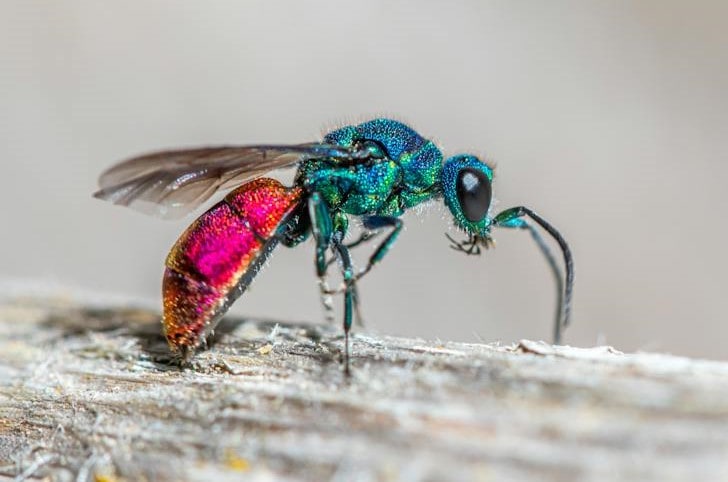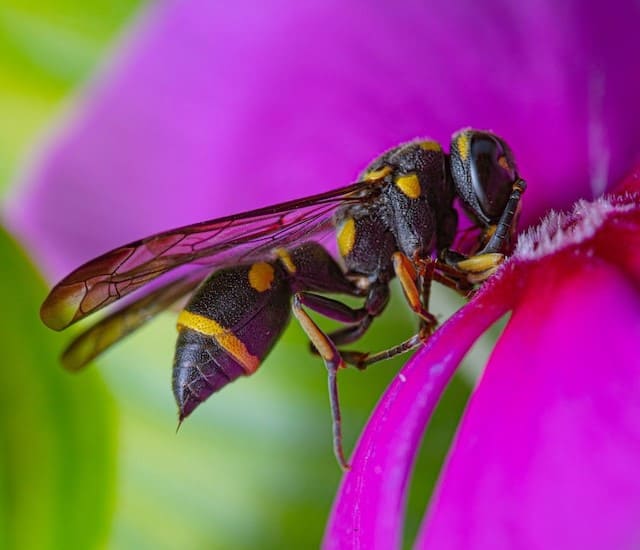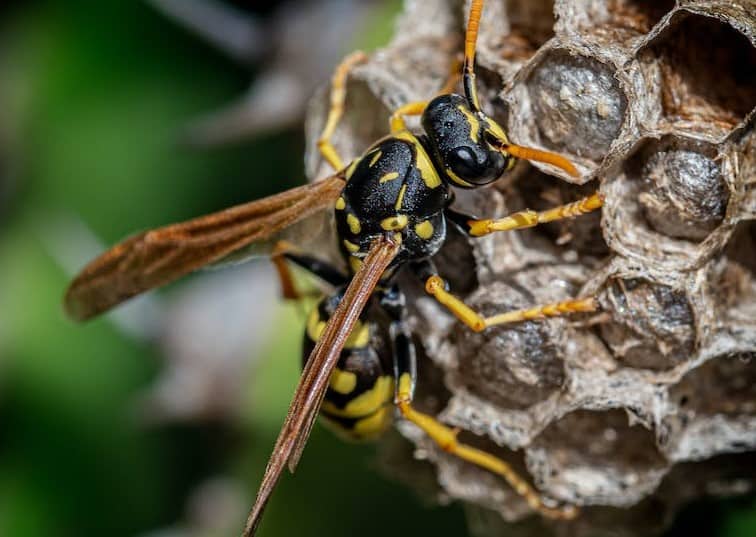Wasps are often mistaken as bee species, but they are not. They may look like a bee, but that’s only on physical appearance.
What are Wasps?

Belonging to the order Hymenoptera, wasps belong in a diverse group with more than a hundred thousand species around the world, and some are still unspecified.
Wasps do not belong to a natural group of animals with a single ancestor. These insects are believed to have the same ancestor as bees and ants.
These insects are so diverse that some species can be two inches long (the Asian giant hornet) while others are too small that they are measured in micrometers.
In fact, the Dicopomorpha echmepterygis, the world’s smallest identified insect, measuring 139 micrometers, is a wasp.
Do Wasps Sting?
Some wasps sting while others do not. But these insects are more commonly known to sting humans than bees. And worse, some wasp stings are more painful than those of bees.
Due to their stinging capacities, many people tend to want to get rid of these pesky insects as fast as they can. There are those who destroy and clean off wasp nests in the hope of discouraging these insects from living nearby.
Some people use commercial wasp sprays to shoo these insects away. However, there are more humane ways of getting rid of these wasps.
One great idea for getting rid of them is by waiting for a wasp’s lifespan to end instead of killing them. Which brings us to the next question: how long do wasps live?

How long do Wasps live?
Wasps are a varied species and, depending on their types and roles in life, have different lifespans. On a general note, though, wasps can live as short as 12 weeks and as long as a year.
Based on the Roles They Play
A Worker Wasp usually lives the shortest, enjoying his life from childbirth to 12-22 days.
On the other hand, a Queen Wasp can live for up to a year.
In the case of Paper Wasps, the Drones live right after fulfilling their roles of getting the queen fertilized.
Based on Types of Wasp
Among the many wasp species, the most common are the yellowjackets and the paper wasps.
The Yellowjackets
Yellowjackets (Vespula vulgaris) may look like honey bees, but they are not. These wasps are among the most common wasp species.
They are a kind of wasp that is social in nature. They prefer building nests together and can build one bigger than a human’s head.
A queen yellowjacket can live from 10-12 months.

The Paper Wasps
Paper wasps (Polistes spp) are semi-social wasps. They build nests together but not as large as the Yellowjackets.
In a paper wasp colony, there is a caste system comprised of the queen, workers, and drones. In this caste system, the lifespan of a wasp varies depending on the role it performs.
Unlike a queen honey bee that can live for more than a year, the queen paper wasp will live to die off in around 10-12 months after doing their jobs of laying eggs, hatching them into larvae, and producing worker wasps. In a wasp colony, a new queen reigns every year.
Worker paper wasps help in building the nest, gathering food, feeding the young, and protecting the nest. In the 3rd or 4th month of existence, these worker wasps die to be replaced by young workers.
The workers have a shorter lifespan due to the wearing out of their bodies as they diligently provide for the needs of the queen, the young, and the rest of the colony.
The drone paper wasps are tasked to fertilize the queens. With just this job to tackle, they live longer than worker wasps but not longer than queen wasps.
However, once they have fulfilled their roles, they die a natural death after mating with a queen. In some cases, these drones are sacrificed and killed by worker wasps as a means of food preservation.
Wasps Living Indoors
Some wasps live indoors for a few reasons. Wasp nests must be constructed in warm and dry areas with little to no disturbance. This is what attracts a few wasps to build their wasp nests in attics inside the house.
Outdoors, the wasps live in regulated temperatures, something that benefits their health and well-being. Also, wasps can easily source their food when they are outside the house. It is easier for them to travel back and forth to food sources such as flowers for nectars.
The natural conditions of living outdoors allow for better health and longer lifespan. A wasp living indoors may have a shorter lifespan than one who lives in a nest within its natural habitat.

The Life Cycle of a Wasp
The life cycle of every wasp colony starts off with a queen wasp inside a cell.
The Egg Stage
This mother wasp lays eggs in the fiber cells of the wasp nest. These eggs stay the same way for about 5 days before. After the egg stage, the wasp egg hatches into wasp larvae.
The Larvae Stage
The larvae are fed by the queen for about 10-20 days.
The Pupa Stage
After such time, the larvae undergo the pupation stage where metamorphosis occurs. There is a breakdown of the larval structures and the wasp larvae change. During this stage, adult structures, such as the wings, start to develop. Wasps go through this stage for 8-18 days.
The Adult Stage
Once the pupation stage ends, these insects are no longer larvae but adult wasps. An adult wasp is then ready to fly and perform its role.
The wasp life cycle ends when these insects eventually die a natural death.

Why does a Queen Wasp live a Longer Life?
A wasp nest is a honeycomb-like structure made up of individual cells. The nest is created by a queen wasp using its saliva and wood fiber. Once there are enough cells in the nest, the queen starts laying eggs.
Queen wasps are the only females in the population that reproduce. Once they are mated, they lay eggs, and these female wasps hibernate. After which, and during the spring season, they go out to start a new colony.
Queen wasps start building their nests by themselves. Unlike honey bees that build their hives hand in hand, queen wasps work solitarily at the start of nest-building. Only when they have grown enough worker wasps in the colony can the queen get aid in building the wasp nest.
It is believed that the fact that a queen wasp gets enough rest when it hibernates and has enough worker wasps to help in nest-building contributes to the queen’s longer lifespan.
